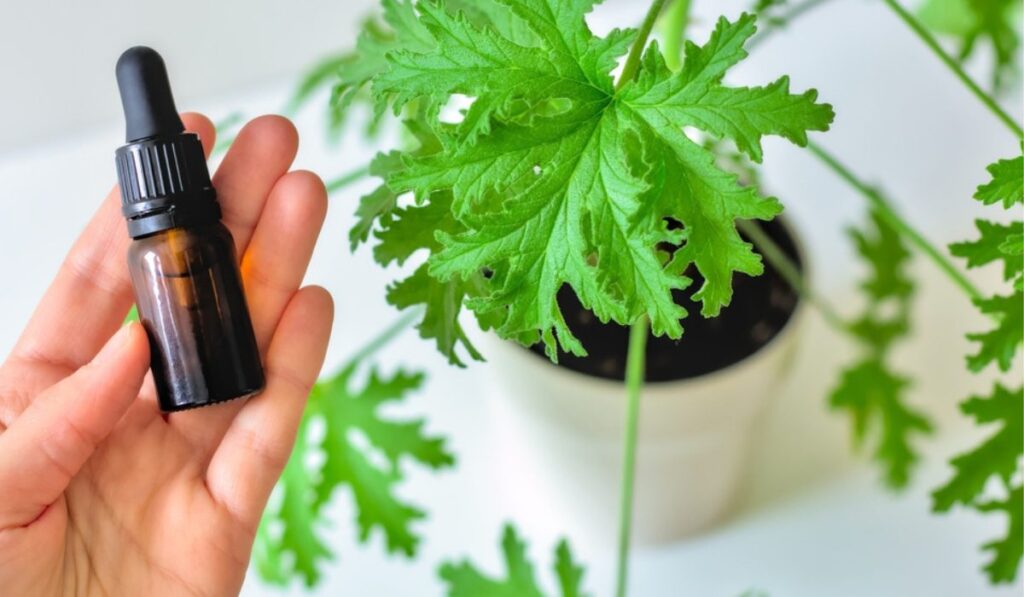
Naturally Shielded: The Ultimate Guide to Implementing Plant-Based Repellents for a Pest-Free Life
In a world increasingly conscious of its environmental footprint, the appeal of natural solutions has never been stronger. When it comes to pest control, this translates to a growing interest in plant-based repellents. These alternatives offer a compelling blend of effectiveness, sustainability, and safety, making them a smart choice for homeowners, gardeners, and anyone seeking to coexist peacefully with nature. This comprehensive guide delves deep into the world of plant-based repellents, providing you with the knowledge and tools to implement them effectively and enjoy a pest-free environment.
Understanding the Appeal of Plant-Based Repellents
Before we dive into the specifics, let’s explore why plant-based repellents are gaining so much traction. The benefits are numerous and compelling:
- Environmental Friendliness: Unlike many synthetic pesticides, plant-based repellents are derived from natural sources, often biodegradable, and less likely to harm beneficial insects, wildlife, or contaminate water sources.
- Safety: Many plant-based repellents are considered safer for humans and pets, with lower toxicity levels and reduced risk of adverse health effects.
- Effectiveness: When used correctly, plant-based repellents can be highly effective at deterring a wide range of pests, from mosquitoes and ticks to ants and rodents.
- Accessibility: Many plant-based repellents are readily available commercially, while others can be made at home using readily available ingredients.
- Sustainability: By choosing plant-based options, you’re supporting sustainable practices and reducing your reliance on chemicals with potentially harmful environmental impacts.
The Science Behind Plant-Based Repellents
The effectiveness of plant-based repellents stems from their unique chemical composition. Plants produce a vast array of compounds, known as secondary metabolites, to defend themselves against herbivores, pathogens, and other threats. These compounds, which include essential oils, alkaloids, and terpenes, often have strong odors or tastes that repel pests. Some work by interfering with the pest’s nervous system, while others disrupt their feeding or reproductive cycles.
The specific compounds responsible for repellent activity vary depending on the plant species. For example, citronella oil contains citronellal, geraniol, and limonene, which are effective mosquito repellents. Neem oil contains azadirachtin, which disrupts the growth and development of various insect pests. Understanding the science behind these compounds allows us to appreciate the power of nature’s defenses and how we can harness them for our benefit.
Key Plant-Based Repellents and Their Applications
Let’s explore some of the most effective and widely used plant-based repellents:
Citronella
Citronella is perhaps the most well-known plant-based repellent, prized for its ability to repel mosquitoes. The essential oil is extracted from the leaves and stems of the Cymbopogon nardus grass. Citronella is commonly used in candles, torches, and sprays, providing a pleasant, lemony scent while keeping mosquitoes at bay. It’s a popular choice for outdoor gatherings and recreational activities.
- Applications: Mosquito repellents (candles, sprays, lotions), insect repellent bracelets, outdoor torches.
- Effectiveness: Moderate, particularly effective in enclosed or semi-enclosed areas.
- Safety: Generally safe for humans, but can cause skin irritation in some individuals.
Neem Oil
Derived from the seeds of the neem tree (Azadirachta indica), neem oil is a powerful broad-spectrum insecticide and repellent. It contains azadirachtin, which disrupts the feeding and development of insects. Neem oil is effective against a wide range of pests, including aphids, mealybugs, scale insects, and caterpillars. It’s also effective against certain fungal diseases.
- Applications: Insecticide sprays, soil drenches, leaf shines for houseplants.
- Effectiveness: High, particularly effective against soft-bodied insects and certain fungal diseases.
- Safety: Generally safe for humans and pets when used as directed, but can be toxic to aquatic organisms.
Eucalyptus Oil
Eucalyptus oil, particularly those high in 1,8-cineole, is an effective repellent against mosquitoes, ticks, and other biting insects. It has a refreshing, medicinal scent and is often used in sprays and lotions. Eucalyptus oil can also be used as a natural disinfectant and air freshener.
- Applications: Mosquito and tick repellents, air fresheners, cleaning products.
- Effectiveness: Moderate to high, depending on the concentration and formulation.
- Safety: Generally safe for humans, but can cause skin irritation in some individuals. Avoid ingestion.
Peppermint Oil
Peppermint oil has a strong, pungent aroma that repels a variety of pests, including ants, spiders, rodents, and mosquitoes. It can be used in sprays, diffusers, or applied directly to areas where pests are present. Peppermint oil also has a refreshing scent that can help freshen the air.
- Applications: Ant and spider repellents, rodent deterrents, air fresheners.
- Effectiveness: Moderate, particularly effective against ants and spiders.
- Safety: Generally safe for humans, but can cause skin irritation in some individuals. Avoid ingestion.
Lavender Oil
Lavender oil is known for its relaxing fragrance, but it also possesses insect-repelling properties. It’s effective against mosquitoes, moths, and fleas. Lavender oil can be used in sprays, diffusers, or added to homemade cleaning products. It’s a gentle and pleasant option for repelling pests.
- Applications: Mosquito and moth repellents, air fresheners, aromatherapy.
- Effectiveness: Moderate, particularly effective against moths and fleas.
- Safety: Generally safe for humans and pets.
Other Plant-Based Repellents
Other plants and their extracts also possess repellent properties, including:
- Tea Tree Oil: Effective against mosquitoes, fleas, and ticks.
- Rosemary Oil: Repels mosquitoes and other flying insects.
- Cedarwood Oil: Repels moths, ants, and other insects.
- Garlic: Repels a wide range of pests, including insects and rodents.
- Basil: Repels mosquitoes and flies.
- Chrysanthemum: Contains pyrethrins, a natural insecticide.
Implementing Plant-Based Repellents: A Step-by-Step Guide
Now that you’re familiar with the key plant-based repellents, let’s explore how to implement them effectively:
1. Identify the Pests
Before you start, accurately identify the pests you’re dealing with. Different repellents are effective against different pests. Knowing your enemy is the first step to victory. Take the time to observe the pests, their behavior, and the damage they’re causing. This will help you choose the most appropriate repellent and application method.
2. Choose the Right Repellent
Based on the pests you’ve identified, select the most effective plant-based repellent. Consider factors such as the pest’s susceptibility to the repellent, the area you need to protect, and the safety of the repellent for humans, pets, and the environment. Research the specific properties and effectiveness of each repellent to make an informed decision.
3. Prepare the Repellent
Many plant-based repellents are available commercially in ready-to-use formulations. However, you can also make your own repellents at home. This can be a cost-effective and sustainable option. If you’re making your own, follow the instructions carefully and use high-quality ingredients. Be sure to dilute essential oils properly to avoid skin irritation or other adverse effects. Always test a small area first to ensure the repellent doesn’t damage surfaces.
4. Apply the Repellent
The method of application depends on the type of repellent and the pests you’re targeting. Here are some common application methods:
- Sprays: Ideal for treating plants, surfaces, and areas where pests are present. Follow the manufacturer’s instructions or your homemade recipe.
- Diffusers: Great for indoor use, releasing essential oils into the air to repel pests.
- Candles and Torches: Effective for outdoor use, creating a barrier of repellent around the area.
- Topical Applications: Lotions, sprays, or oils applied directly to the skin for personal protection.
- Soil Drenches: Used to treat soil and protect plant roots from pests.
5. Reapply as Needed
Plant-based repellents are often less persistent than synthetic pesticides, so you’ll need to reapply them regularly to maintain effectiveness. The frequency of reapplication depends on the repellent, the weather conditions, and the severity of the pest infestation. Follow the manufacturer’s instructions or your homemade recipe for reapplication intervals. Consider using a combination of methods for enhanced protection.
6. Monitor and Adjust
Monitor the results of your efforts and adjust your approach as needed. If the repellent isn’t effective, try a different one or a different application method. Keep an eye out for any signs of pest activity and take prompt action to prevent them from becoming a problem. Observe the effects of the repellent on plants and surfaces, and adjust your application accordingly.
Making Your Own Plant-Based Repellents: Recipes and Tips
Creating your own plant-based repellents can be a rewarding and cost-effective way to manage pests. Here are a few simple recipes to get you started:
Homemade Mosquito Repellent Spray
This spray uses essential oils known for their mosquito-repelling properties.
- Ingredients:
- 1/2 cup witch hazel
- 1/2 cup distilled water
- 30 drops citronella essential oil
- 15 drops eucalyptus essential oil
- 15 drops lavender essential oil
- Spray bottle
- Instructions:
- Combine all ingredients in a spray bottle.
- Shake well before each use.
- Spray on exposed skin, avoiding the eyes and mouth.
- Reapply every 2-3 hours.
Neem Oil Insecticide Spray
This spray is effective against a wide range of insect pests.
- Ingredients:
- 1 tablespoon neem oil
- 1 teaspoon mild liquid soap (such as castile soap)
- 1 quart water
- Spray bottle
- Instructions:
- Combine all ingredients in a spray bottle.
- Shake well before each use.
- Spray directly on affected plants, covering both the top and bottom of the leaves.
- Reapply every 7-14 days, or as needed.
Peppermint Ant Repellent Spray
This spray deters ants from entering your home.
- Ingredients:
- 2 cups water
- 10-20 drops peppermint essential oil
- Spray bottle
- Instructions:
- Combine water and peppermint oil in a spray bottle.
- Shake well before use.
- Spray along entry points, such as windowsills, doorways, and cracks.
- Reapply as needed.
Important Note: Always test any homemade repellent on a small area first to ensure it doesn’t damage surfaces or plants. When working with essential oils, use caution and avoid direct contact with eyes and mucous membranes. Consult with a qualified professional if you have any concerns.
Tips for Maximizing the Effectiveness of Plant-Based Repellents
To get the best results from your plant-based repellents, consider these additional tips:
- Combine Methods: Use a combination of methods, such as sprays, candles, and topical applications, for enhanced protection.
- Apply Regularly: Reapply repellents as directed to maintain their effectiveness.
- Target Problem Areas: Focus on areas where pests are most active or likely to be present.
- Maintain a Clean Environment: Remove food sources and eliminate standing water to reduce pest attractants.
- Use Barrier Methods: Create physical barriers, such as screens and netting, to prevent pests from entering your home or garden.
- Consider Companion Planting: Plant herbs and flowers that naturally repel pests alongside your vulnerable plants.
- Choose High-Quality Products: Select reputable brands and products that contain high-quality essential oils or extracts.
- Store Properly: Store plant-based repellents in a cool, dark place away from direct sunlight.
- Read Labels Carefully: Always read and follow the manufacturer’s instructions for safe and effective use.
- Be Patient: Plant-based repellents may take time to work, so be patient and consistent with your application.
Addressing Common Questions and Concerns
Here are answers to some frequently asked questions about plant-based repellents:
Are plant-based repellents safe for pets?
Many plant-based repellents are considered safe for pets when used as directed. However, some essential oils can be toxic to pets, especially cats and dogs. Always research the safety of a specific repellent before using it around pets. Avoid direct application to pets and consult with a veterinarian if you have any concerns.
Can plant-based repellents be used indoors?
Yes, many plant-based repellents can be used indoors, such as diffusers, candles, and sprays. However, ensure adequate ventilation, especially when using essential oil diffusers. Be mindful of potential sensitivities and avoid using repellents near infants, pregnant women, or individuals with respiratory issues.
How long do plant-based repellents last?
The duration of effectiveness varies depending on the repellent, the concentration, the weather conditions, and the pests you’re targeting. Reapplication is often necessary to maintain protection. Check the product label for specific reapplication instructions.
Are plant-based repellents effective against all pests?
Plant-based repellents are effective against a wide range of pests, but they may not be effective against all species. The effectiveness of a particular repellent depends on the pest’s susceptibility to the active ingredients. Some pests may require a combination of repellents or other pest control methods.
Can I make my own plant-based repellents?
Yes, you can make your own plant-based repellents using essential oils, extracts, and other natural ingredients. However, it’s essential to follow recipes carefully, use high-quality ingredients, and dilute essential oils properly to avoid skin irritation or other adverse effects. Always test homemade repellents on a small area first to ensure they don’t damage surfaces or plants.
The Future of Pest Control: Embracing Plant-Based Solutions
The shift towards plant-based repellents represents a significant step forward in sustainable pest management. As we become more aware of the impact of synthetic pesticides on our health and the environment, the demand for natural alternatives will only continue to grow. Plant-based repellents offer a compelling solution, providing effective pest control while minimizing harm and promoting environmental stewardship. By embracing these natural solutions, we can create a healthier, more balanced ecosystem for ourselves and future generations.
The journey to a pest-free life with plant-based repellents is a rewarding one. It requires a blend of knowledge, patience, and a commitment to sustainable practices. By understanding the science, exploring the options, and implementing them effectively, you can create a safer, more enjoyable environment for yourself, your family, and the planet. So, take the leap, embrace the power of nature, and experience the benefits of naturally shielded living. You’ll be amazed at the results!



